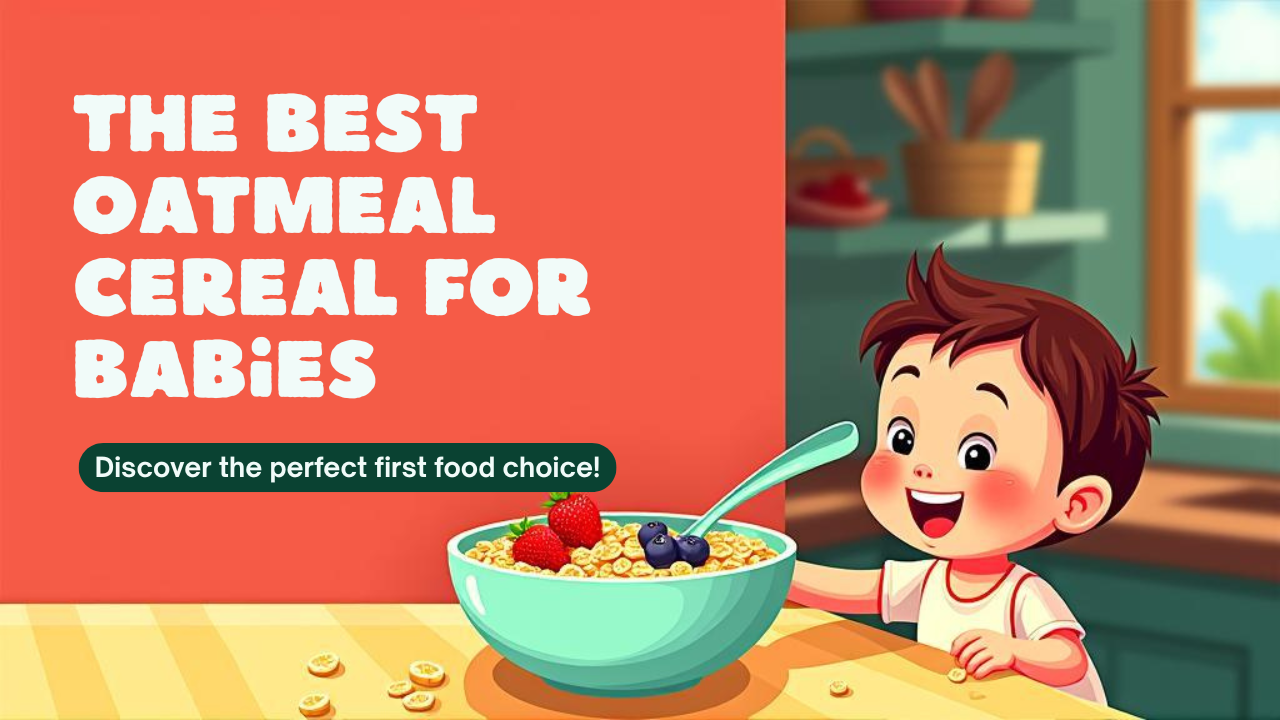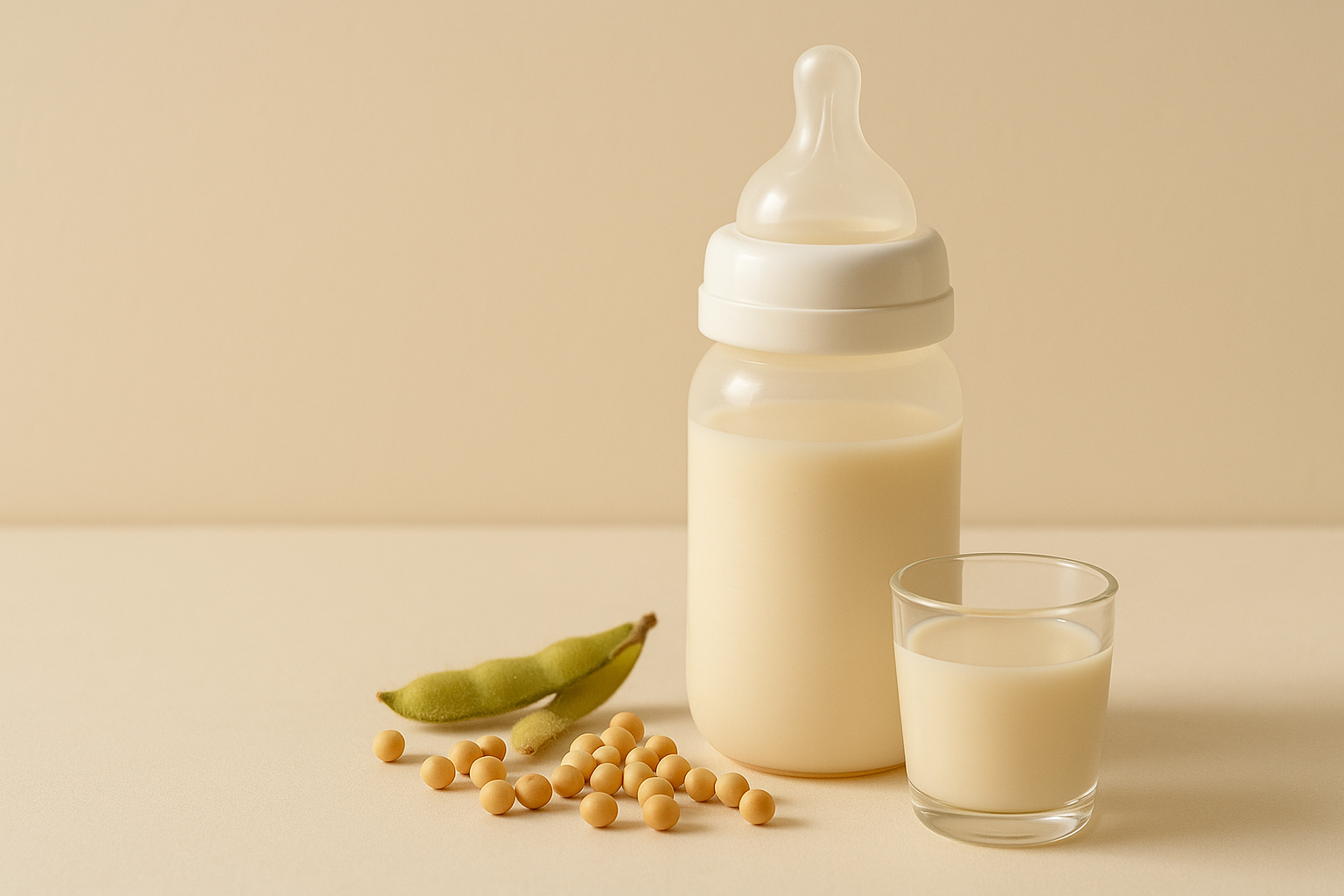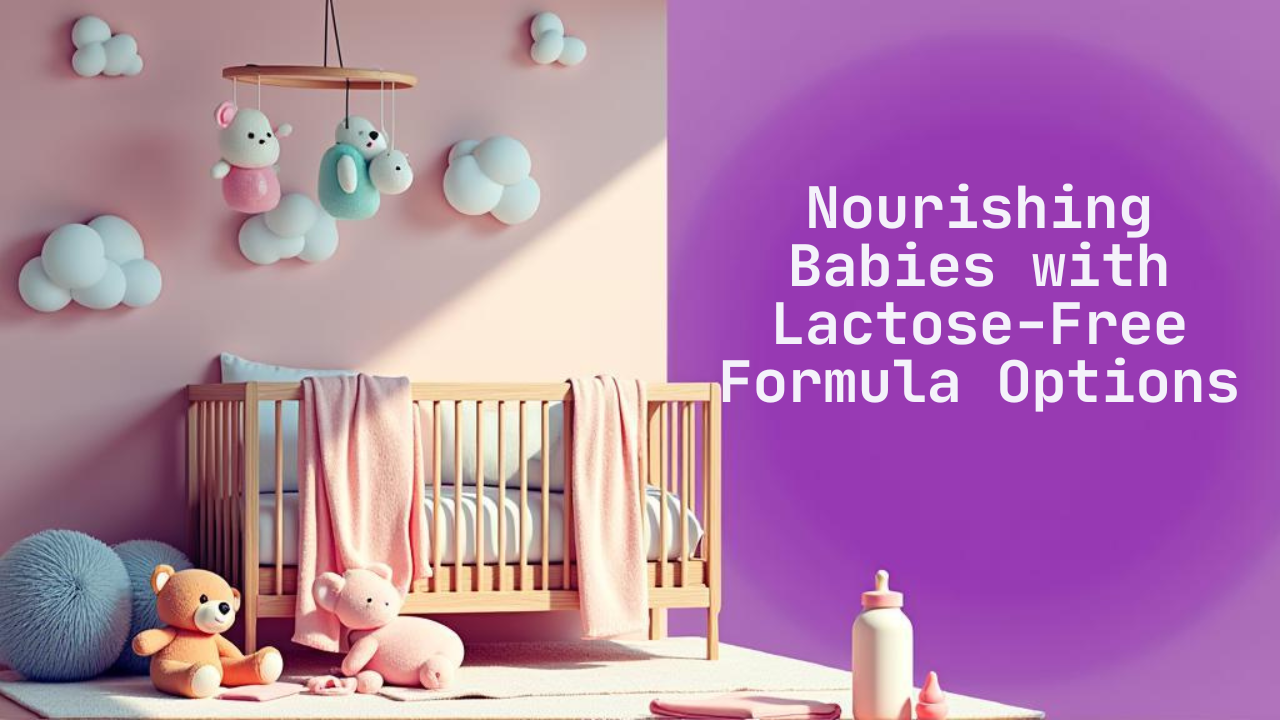The Best Oatmeal Cereal for Babies
Introducing your baby to solid food is an exciting milestone, and oatmeal cereal is one of the most popular first foods for many parents. It’s gentle on little tummies, full of essential nutrients, and easy to prepare with breast milk or formula. When choosing foods, it’s important to focus on your baby's specific needs, as a baby's nutritional requirements are different from those of older children.
But with so many types and brands available, it’s natural to wonder:
- What type of oatmeal is best for babies?
- Which brands are safe and nutritious?
- Is oatmeal cereal healthier than rice cereal?
Oatmeal cereal is a nutritious, easy-to-digest component of a baby's diet, supporting brain development and immune function.
This guide will help you make confident choices about baby oatmeal, from selecting the right type to preparing it in a way that supports healthy growth and encourages self-feeding.
Introduction to Baby Food
Introducing solid foods to your baby is a major milestone, marking the beginning of a new chapter in your baby’s development. Around 4 to 6 months of age, most babies are ready to start exploring the world of solid foods, and baby cereal is often the first step on this exciting journey. Baby oatmeal cereal is a favorite among parents because of its mild flavor, smooth texture, and easy digestibility, making it an ideal introduction to solid foods. Oatmeal cereal can be easily mixed with breast milk or formula, helping your baby transition from liquids to more substantial foods. As you navigate the world of baby food, you’ll find that baby oatmeal offers a nutritious, gentle, and versatile option to support your baby’s healthy growth. With so many choices available, it’s important to understand the benefits of baby cereal and how to introduce oatmeal cereal in a way that’s right for your baby. In this section, we’ll guide you through the basics of baby food, highlight the advantages of baby oatmeal, and help you feel confident as you introduce your baby to their very first foods.
What Type of Oatmeal is Best for Babies?
When it comes to feeding young babies, texture, nutrition, and digestibility matter most.
Here are the most common types of oatmeal for babies:
- Baby Oatmeal Cereal (Finely Ground Oats)
- Specially made for infants, these are finely milled for a smooth texture that’s easy to swallow.
- Often iron-fortified to support healthy brain development.
- Infant cereal is often fortified with iron and designed specifically for the earliest stages of complementary feeding.
- Rolled Oats (For Older Babies)
- Steamed and flattened whole oats. Suitable once baby can handle slightly thicker textures, usually after 8 months.
- Can be blended to a finer consistency for younger babies.
- Steel-Cut Oats
- Less processed, chewier texture. Best for babies over 1 year who can chew well.
- Instant Oats
- Quick to prepare but may have a softer, mushy texture. Choose plain, no added sugar or flavorings.
Best choice for starting solids:
- Single-grain, iron-fortified baby oatmeal cereal made from whole grain oats.
Infant oatmeal cereal can be prepared at home using simple ingredients or purchased as a convenient, ready-to-use option.
Is Oatmeal Cereal Healthy for Babies?
Yes — oatmeal cereal offers many nutritional benefits for babies:
- Iron fortified: Supports brain development and prevents anemia.
- Whole grains: Provide fiber for a healthy digestive system.
- Vitamins and minerals: Vitamin E, B vitamins, magnesium, and zinc. The zinc content in oatmeal cereal helps support your baby's immune system and overall immune health.
- Easily digestible: Gentle on sensitive stomachs.
- Versatile: Can be mixed with breast milk, formula, or fruit purees.
Unlike rice cereal, oatmeal cereal tends to have lower levels of heavy metals (a common concern for some parents). It also has more fiber and a natural mild flavor that many babies enjoy.
Oatmeal Cereal vs Rice Cereal – Which is Better?
Both can be part of a baby’s diet, but oatmeal cereal has some advantages:
Feature
Oatmeal Cereal
Rice Cereal
Fiber
Higher
Lower
Iron Fortification
Yes
Yes
Risk of Heavy Metals
Lower
Higher concern
Taste
Mild, slightly nutty
Neutral
Texture
Creamy
Smooth
💡 Many parents now start with oatmeal cereal or alternate between oatmeal and other grains like barley, millet, or multigrain blends.
Multi grain baby cereal is another nutritious option, offering a variety of grains and textures to support a baby's developing palate.
Which Brand of Oats Are Good for Babies?
When choosing baby oatmeal cereal, look for these qualities:
- Iron-fortified
- No added sugar or salt
- Whole grain oats
- Some high-quality baby cereals use organic oat flour as a nutrient-rich, easy-to-digest ingredient
- Certified organic (optional but preferred)
- No artificial flavors or preservatives
Best Baby Cereals for 1-Year-Olds: Nourish Growing Bodies
By one year old, babies can enjoy a wider variety of cereals, including multigrain blends. After your child's first birthday, you can also introduce new dietary options like oat milk and cereals. Look for cereals that include:
- Oats + quinoa
- Oats + barley
- Oats + wheat (if no allergy)
For babies over one year old, you can prepare oatmeal with cow's milk if there are no dairy allergies, adding nutritional value and variety to their diet.
These provide a balanced mix of essential nutrients to support healthy growth.
Organic Baby Oatmeal – Is it Worth It?
Organic baby oatmeal is made from oats grown without synthetic pesticides or fertilizers. Parents choose it for peace of mind, though both organic and non-organic can be safe if you choose trusted brands.
Organic benefits:
- Certified organic ingredients
- Often whole grain and nutrient-rich
- No artificial flavors or preservatives
Nutritional Benefits of Baby Oatmeal
Oatmeal cereal supports:
- Healthy digestion – Rich in soluble fiber.
- Brain development – Iron fortification is essential.
- Nerve function and cognitive growth – Nutrients in oatmeal, such as choline, support healthy nerve function and cognitive development.
- Immune function – Contains zinc and vitamin C.
- Strong bones – Source of magnesium and vitamin D.
How to Prepare Baby Oatmeal Cereal
Basic Preparation (for first foods):
- Mix 1–2 tablespoons of baby oatmeal cereal with 4–5 tablespoons of warm breast milk or formula.
- Stir well until smooth.
- Serve at a thin consistency for beginners, thickening as your baby learns to chew.
For older babies:
- Mix oatmeal with mashed banana, steamed apple puree, or vegetable purees.
- Introduce finger foods by offering thicker oatmeal served on a preloaded spoon.
Note: Other parents may prefer different preparation methods or ingredients to suit their baby's unique needs and preferences.
Homemade vs. Store-Bought Baby Oatmeal: Which Should You Choose?
When deciding between homemade and store-bought baby oatmeal cereal, there are several factors to consider. Making your own baby oatmeal cereal at home gives you complete control over the ingredients, allowing you to use whole grain oats like rolled oats or steel cut oats. This can be a great way to ensure your baby is getting the freshest, most natural food possible, and you can easily adjust the texture to suit your baby’s stage of eating. Homemade oatmeal cereal also lets you avoid unnecessary additives and tailor the preparation to your baby’s preferences.
On the other hand, store-bought baby oatmeal cereal is designed for convenience and is often fortified with essential nutrients such as iron and vitamin E, which are important for your baby’s healthy growth and development. Many organic baby cereal options are made with whole grain oats and are free from added sugars and artificial ingredients, offering both nutrition and peace of mind. Store-bought options also come with clear preparation instructions and are easy to store in an airtight container, keeping the cereal fresh and ready for mealtime.
Ultimately, the choice between homemade and store-bought baby oatmeal cereal depends on your family’s lifestyle, your baby’s needs, and your personal preferences. Whichever you choose, both options can provide excellent health benefits and support your baby’s nutritional needs as they begin eating oatmeal cereal.
Introducing Oatmeal Cereal to Your Baby’s Diet
- Start with one new food at a time to watch for allergic reactions. When introducing new cereals or other foods, it's important to monitor for food allergies, especially during the early feeding stages.
- Oats are generally not a common allergen, but some babies may have sensitivities.
- Wait 3–5 days before introducing another new food.
Multi-Grain Baby Cereals
Once your baby has tried single-grain oatmeal and tolerated it well, you can explore multi-grain cereals that include oats, barley, quinoa, or rice. These add variety and different vitamins and minerals.
Common Food Allergens to Watch For
While oats are usually safe, some baby cereals may be processed in facilities that handle:
- Wheat
- Tree nuts
- Cow’s milk
Always read labels carefully.
Choking Hazards: Keeping Mealtime Safe
As your baby begins to explore solid foods, safety at mealtime becomes a top priority. Choking is a common concern for parents, especially when introducing new foods like baby cereal. To help keep your baby safe, always ensure that foods are finely ground and served at a thin or smooth consistency, especially in the early stages of eating solids. Start with a thin consistency for baby cereal and gradually thicken it as your baby becomes more comfortable with eating.
Avoid offering foods that are known choking hazards, such as whole nuts, seeds, popcorn, or large chunks of food. Always supervise your baby closely during meals and never leave them unattended while eating. Pay attention to your baby’s developmental stage and adjust the texture of foods as they grow. By following these simple precautions and introducing new foods slowly, you can make mealtime a safe and enjoyable experience for your baby.
Storage Tips – Keeping Oatmeal Cereal Fresh
- Store in an airtight container.
- Keep in a cool, dry place away from sunlight.
- Use within the time frame indicated on the packaging.
Signs Your Baby is Ready for Oatmeal Cereal
- Can sit up with minimal support.
- Shows interest in food and opens mouth for a spoon.
- Can move food from front of mouth to back to swallow.
Encouraging Self-Feeding with Oatmeal
- Offer oatmeal on a preloaded spoon for baby to grab.
- Use thicker oatmeal for less mess.
- Let baby touch and explore food to build eating confidence.
Adding Oatmeal to Your Baby’s First Foods Plan
A balanced first foods plan might look like this:
Morning – Baby oatmeal with breast milk + mashed fruit
Lunch – Vegetable puree with lentils
Dinner – Oatmeal cereal with pumpkin puree
Tips for Serving Oatmeal Cereal
- Always supervise while eating.
- Serve fresh – discard any leftovers from the bowl after feeding.
- Adjust consistency based on your child’s age. Food safety recommendations and the appropriate texture of oatmeal cereal depend on your child's age and developmental stage. For younger babies, offer thinner, smoother oatmeal to reduce choking hazards, and gradually increase thickness and texture as your child grows and develops.
- Keep it simple – avoid added sugar or honey.
Supporting Your Baby’s Immune System with Whole Grains
Whole grain oats provide beta-glucan, a type of fiber that supports a healthy immune system. Pairing oatmeal with vitamin C-rich fruits like papaya or mango can help the body absorb iron better.
When to Offer Oatmeal Cereal
- Breakfast is a great time to serve oatmeal, as it provides slow-release energy.
- Can also be offered as a snack for older babies learning self-feeding.
Transitioning to Other Foods
As your baby grows:
- Introduce finger foods like soft oat pancakes or oat porridge fingers.
- Combine oats with other grains for variety.
Common Questions About Baby Oatmeal Cereal
Parents often have plenty of questions when it comes to introducing baby oatmeal cereal. Here are some of the most common questions and helpful answers to guide you:
Q: What is the best type of oatmeal cereal for my baby?
A: Choose an iron-fortified oatmeal cereal made from organic, whole grain oats. Look for options with minimal added sugars and no unnecessary additives to ensure your baby gets the best nutritional value.
Q: How do I prepare baby oatmeal cereal?
A: Follow the preparation instructions on the package, or simply mix the oatmeal cereal with breast milk, formula, or water until you reach the desired consistency. Start with a thinner texture for young babies and thicken as your baby grows.
Q: Can I make my own baby oatmeal cereal?
A: Absolutely! You can make baby oatmeal cereal at home using rolled oats or steel cut oats. Simply grind the oats into a fine powder and cook with water or breast milk for a smooth, baby-friendly texture.
Q: What are the health benefits of eating oatmeal cereal for babies?
A: Oatmeal cereal is packed with essential nutrients like iron, vitamin E, and fiber, all of which support healthy growth, brain development, and digestion in babies.
Q: Are there any common allergens in baby oatmeal cereal?
A: While oats are not a common allergen, some babies may be sensitive to them or to other ingredients in baby oatmeal cereal. Always check labels for potential allergens and monitor your baby for any signs of an allergic reaction when introducing new foods.
Key Takeaways for Parents
- Start with single-grain, iron-fortified baby oatmeal cereal.
- Choose brands with no added sugar, salt, or unnecessary additives.
- Mix with breast milk or formula for familiar taste and easy digestion.
- Gradually increase texture and variety as your baby grows.
Disclaimer:
This article provides general information for parents and is not a substitute for professional medical advice. Always consult your pediatrician or qualified healthcare provider before introducing new foods, especially if your child has allergies, sensitivities, or medical conditions.
%201.svg)











